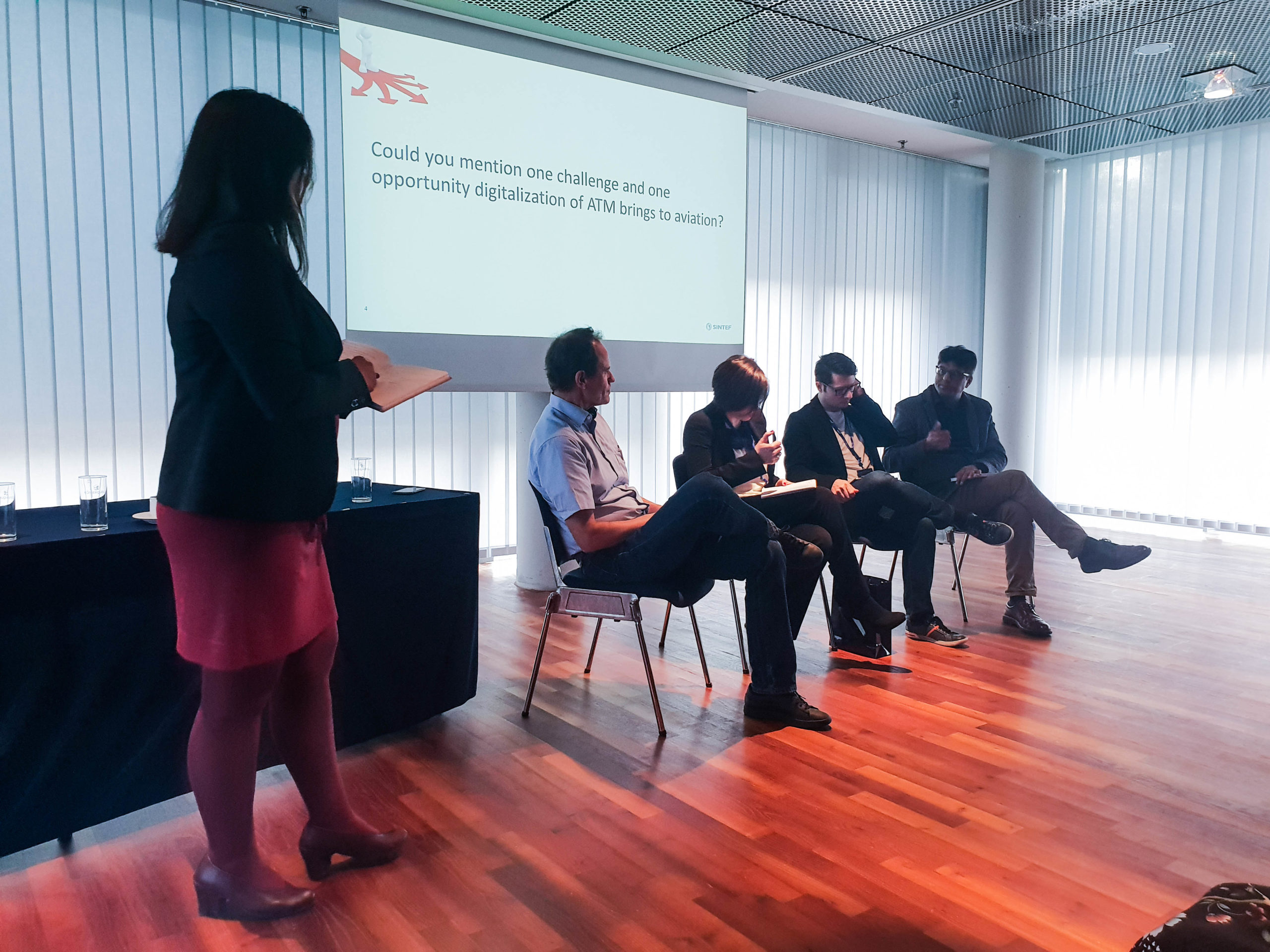Air Traffic Management focuses a lot on aircraft delays, flight schedules, safety and security, etc. What about passengers?
I teamed up with Annika Paul from the research institute Bauhaus Luftfahrt e. V. (BHL) for the first session. Together we advocated for the perspective shift in the way passengers’ needs are accounted for in today’s ATM research based on various findings from Innaxis’s and BHL’s past research work. Our arguments were founded mostly on the results of the project Dataset2050, which will be mentioned more later.
The “opposing” side, or business perspective, was given by Christoph Schneider from the Munich airport and Billy Josefsson from the Swedish Civil Aviation Administration, Luftfartsverket (LFV). They gave the points of view of an airports and an air navigation service provider (ANSP). “Opposing” is probably more appropriate to denote their side as a “complementary” one, since the whole team of experts agreed it is fairly difficult to dispute the fact that the passengers’ role shift as a simple passive participant in commercial aviation in order to drive the innovation in air traffic management (ATM).
Each expert gave a short introductory presentation, providing the audience with their set of arguments, ideas and challenges regarding the ATM innovation being influenced more by the passengers’ needs. This was followed by a Q&A session from the audience and a lively debate among the experts. It was refreshing to have research and industry (ANSPs and airports) in one place, exchanging insights and knowledge each had accumulated through their own professional experience. As the discussion progressed, more questions and challenges were raised; and judging by the bell ring that caught us all in the middle of a (positively) heated discussion, this topic was long overdue! After all, civil aviation exists precisely for the passengers – aircrafts move from point A to point B because they are transporting people (and some freight with them, to be fair) – but the needs of those passengers are often the last thing that ATM researchers and stakeholders study.
Annika and I argued that there is a need for the perspective shift in ATM, or a fresh view that accounts for personal needs of passengers both on the plane and on the journey from house to ho(s)tel rooms, friends’ houses, AirBnB’s or glamping tents. Or, in terms of buzzwords: door-to-door travel needs! This question has gained importance since Flightpath2050 was published by the European Commission. Flightpath2050 is a document which describes the vision of European aviation in the year 2050 through a series of concrete goals. One of them, and probably the most interesting and quoted one, is the ability of 90% of the passengers to execute their door-to-door travel in under 4 hours.
So what does Dataset2050 have to do with passengers’ needs?
Dataset2050 is a project in which both Innaxis and BHL participated, together with Eurocontrol and University of Westminster. The project studied, among other things, the different behavioural aspects of current and future air-passenger types (such as youngsters, families, executives, etc., all of which differ in travelling and spending habits). It also presented statistical models with a set of metrics that provided more concrete, quantitative insights into current and future trends in mobility (for example, simulating the total door-to-door travel for different passenger types). If you’re interested, feel free to play with the visualisations of the results: Click on me! Checking out those results can show you how truly ambitious the above-mentioned Flightpath2050 goal is and how far away from it we still are!
I hope there will be more events like this one, with more research done in this area. Aviation industry should start looking at passengers as more active participants in the air transport as that strategy could prove to be a win-win for both airlines and passengers.




